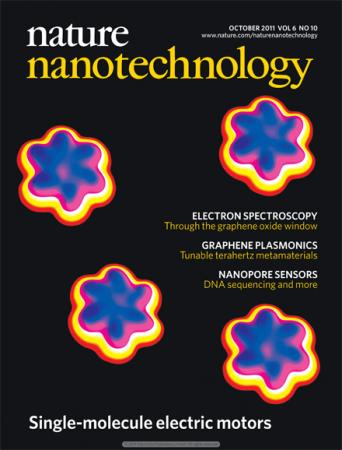 美国俄亥俄州立大学科学家开发出一种名为“纳米隧道电穿孔”的新技术,或称为NEP。利用其给细胞注射基因治疗药剂时,不用针头,而是用电脉冲通过微小的纳米隧道,几毫秒内就能把精确剂量的治疗用生物分子“注射”到单个活细胞内。该研究发表在最近的《自然·纳米技术》杂志网站上。
美国俄亥俄州立大学科学家开发出一种名为“纳米隧道电穿孔”的新技术,或称为NEP。利用其给细胞注射基因治疗药剂时,不用针头,而是用电脉冲通过微小的纳米隧道,几毫秒内就能把精确剂量的治疗用生物分子“注射”到单个活细胞内。该研究发表在最近的《自然·纳米技术》杂志网站上。
长期以来,在进行基因治疗时,人们对插入细胞的药剂数量无法控制,因为人体绝大部分细胞都太小,最小的针头也无能为力。而“NEP让我们能研究药剂和其他生物分子是怎样影响了细胞的生物和基因路径的,现有其他技术都无法达到这么细微的水平。”该校化学与生物分子工程教授詹姆斯·李说。他们用这种方法,将定量的抗癌基因成功插入到白血病细胞中并杀死了它们。
研究人员用聚合物压制成一种电子设备样机,用DNA(脱氧核糖核酸)单链作为模板来构建纳米隧道。詹姆斯·李发明了一种使DNA链解旋的技术,并使其按照需要形成精确结构。他们给DNA链涂上一层金涂层并加以拉伸,使之连接两个容器,然后将DNA蚀去,在设备内部留下一条连通两个容器的尺寸精确的纳米隧道。
隧道中的电极将整个设备变成一个微电路,几百伏特的电脉冲从一个装药剂的容器经纳米隧道到达另一个装细胞的容器,在隧道出口处形成了强大的电场,与细胞自身的电荷相互作用,迫使细胞膜打开一个小孔,足够投放药物而不会杀死细胞。调整脉冲时间和隧道宽度,就能控制药物剂量。
为了测试NEP能否递送活性药剂,他们把一些治疗用RNA(核糖核酸)插入了白血病细胞,发现5毫秒的电脉冲能递送足够剂量的RNA杀死这些细胞;而更长的脉冲,如10毫秒,能杀死几乎所有的白血病细胞。作为对照,他们还插入了一些无害的RNA到白血病细胞中,这些细胞都没死。
詹姆斯·李指出,由于这种方法一次只能给一个或几个细胞注射,更适合用在实验室。目前他们正在开发一种机械式细胞装载系统,一次能给10万个细胞注射,有望用于临床诊断和治疗。
“我们希望NEP能最终用于早期癌症检测与治疗,比如在干细胞或免疫细胞中插入精确剂量的基因或蛋白质,引导它们分化改变,不必担心过量注射带来的安全问题,然后把这些细胞放回体内作为一种细胞基础疗法。”詹姆斯·李说,这种方法还可能用于白血病、肺癌及其他肿瘤。
相关英文论文摘要:
Nanochannel electroporation delivers precise amounts of biomolecules into living cells
Many transfection techniques can deliver biomolecules into cells, but the dose cannot be controlled precisely. Delivering well-defined amounts of materials into cells is important for various biological studies and therapeutic applications. Here, we show that nanochannel electroporation can deliver precise amounts of a variety of transfection agents into living cells. The device consists of two microchannels connected by a nanochannel. The cell to be transfected is positioned in one microchannel using optical tweezers, and the transfection agent is located in the second microchannel. Delivering a voltage pulse between the microchannels produces an intense electric field over a very small area on the cell membrane, allowing a precise amount of transfection agent to be electrophoretically driven through the nanochannel, the cell membrane and into the cell cytoplasm, without affecting cell viability. Dose control is achieved by adjusting the duration and number of pulses. The nanochannel electroporation device is expected to have high-throughput delivery applications.
英文论文链接:https://www.nature.com/nnano/journal/vaop/ncurrent/full/nnano.2011.164.html







